Estimated reading time 13 minutes, 4 seconds.
The 2016 biennial Rim of the Pacific (RIMPAC) Exercise took place from June 30 to Aug. 4 on and around the Hawaiian Islands and parts of Southern California.

Twenty-six nations brought 45 ships, five submarines, over 200 aircraft and 25,000 military personnel to the world’s largest international military maritime exercise, which provides unique and specialized training opportunities for all participants.
Since the first RIMPAC exercise took place in 1971 (with 2016 being its 25th), participants have built working relationships with other nations while gaining experience maintaining the security of oceans and sea lanes around the world. The exercise also allows participating navy amphibious forces to operate together and share best practices.
RIMPAC 2016 marked the first time a detachment of Canadian tactical aviation helicopters would participate. This detachment was comprised of five Edmonton-based 408 Tactical Helicopter Squadron (THS) CH-146 Griffon helicopters and two 450 THS CH-147F Chinook Helicopters based in Petawawa, Ont. Both squadrons are part of 1 Wing of the Royal Canadian Air Force (RCAF).
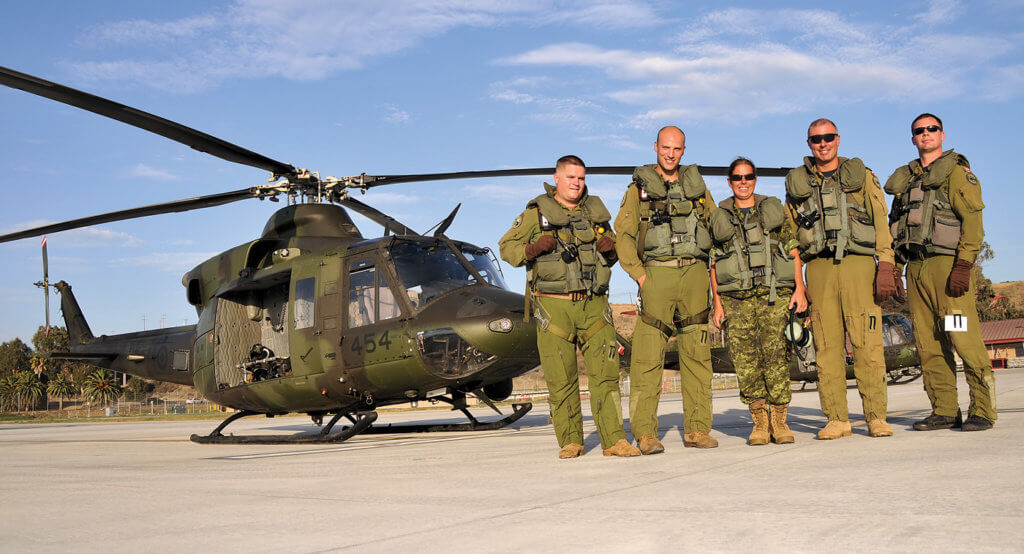
Along with the helicopters, approximately 150 maintenance and support personnel deployed to Marine Corps Base Camp Pendleton located in northern San Diego County, Calif., which served as the Canadians’ operations base. Upon arrival, the Griffons and Chinooks attached to the 15th Marine Expeditionary Unit’s (MEU) Air Command Element (ACE) under Combined Task Force 176. The detachment fell under the operational command of an RCAF Air Task Force (ATF) based in Hawaii but under the control of the local commander as part of the 15th MEU.
RIMPAC Objectives
The primary training objective for the Canadian tactical aviation detachment during RIMPAC 2016 was to achieve deck landing qualifications for the aircrews of both airframe types. The newly acquired Chinooks are still conducting operational capability trials, so RIMPAC marked the first time they would experience deck landing qualifications in real world conditions.
Some 408 THS aircrew had previous experience conducting deck landings but had never completed a progressive training syllabus designed to build crew confidence using internationally recognized standards and procedures for safe deck landings. In order to accomplish these goals, U.S. Marine Corps Helicopter Light Attack squadron HMLA-369 offered lessons to the Canadians in deck landing qualification standard operating procedures. HMLA-369 operates Bell UH-1Y Venoms (Huey) and AH-1Z Viper helicopters. The U.S. Navy made the USS Pearl Harbor, an amphibious dock landing ship, available for the training.
During the deck landing qualifications, the Griffon and Chinook crews practiced dozens of approaches and landings. Later in the week, the Chinooks–with Griffon escorts–flew Canadian troops to the ship. The troops spent the night aboard the ship and the Chinooks picked them up the next day to return them to shore.
Following the completion of the deck landing qualifications, 408 THS commanding officer LCol Trevor Teller told Skies that much was learned. “Our helicopters were able to land on the USS Pearl Harbor with low risk and high confidence,” he said. “The Pearl Harbor’s deck crews were highly competent and helped accomplish the qualifications in short order. Today, tactical aviation has deck landing qualification capabilities available to commanders in situations requiring it.”
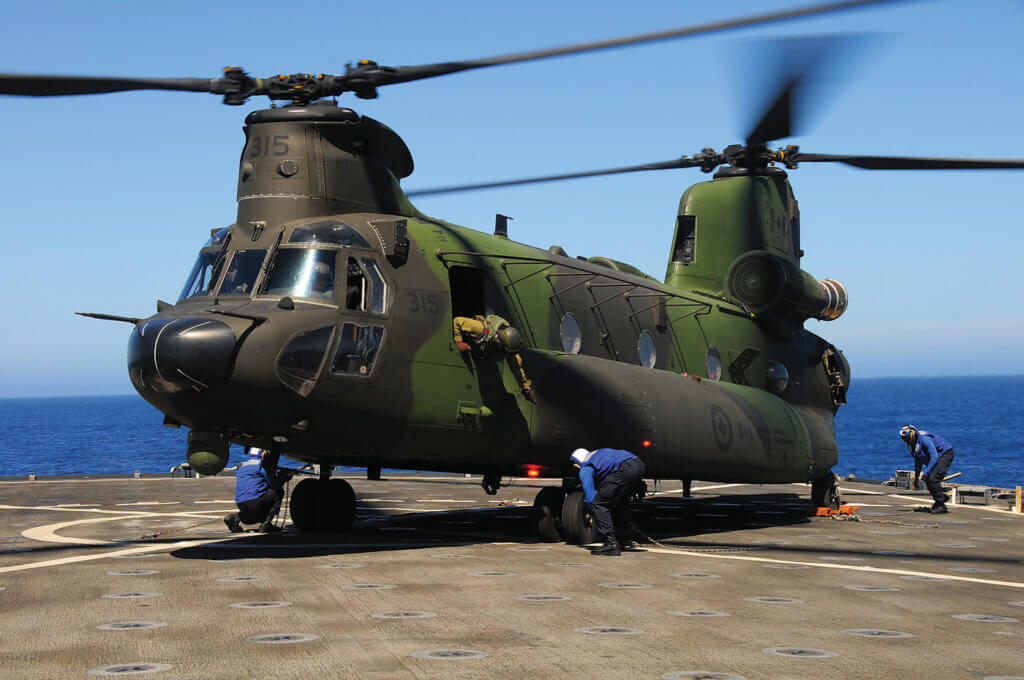
Maj Luc Vermette of 408 Squadron, who was operations officer during RIMPAC, discussed secondary objectives. “We wanted to achieve aerial gunnery with light and heavy machine gun qualifications using the military ranges, conduct desert degraded visual (dust) landings in a hot and high environment, and fly in desert conditions that degraded our helicopters’ performance. This would let our crews get an understanding of how to manage power and weight in these conditions.”
Teller said the goal of RIMPAC training was to simulate real world conditions. “Training like you fight: We seek out these opportunities to train in environments not necessarily found in Canada, but that are certainly representative of the environmental conditions we may encounter in deployed operations,” he said. “Operating in high and hot environments presents challenges for all members of an aviation detachment. As density altitude increases aircraft performance lowers; so, while the aircraft remain capable of functioning in these extremes, the margin for error and excess power available is significantly reduced. It is essential that we expose our crews to these constraints in the training environment. It is a function of enabling the ‘train like you fight’ mentality–which, with enough practice, will translate into a ‘fight like you have trained’ approach to deployed operations.”
Another exercise performed by the Canadians during RIMPAC was a (Joint) Tactical Recovery of Aircraft and Personnel (TRAP) mission with both the CH-146 and CH-147F helicopters, with support from Marine Corps Helicopter Light Attack Squadron HMLA-369 and their AH-1Y and AH-1Z attack helicopters.
A TRAP involves the rescue of downed aviators in a known location. The rescue package is normally two or more rescue helicopters (Chinooks in this case) escorted by armed helicopter gunships. Although not a mission conducted by Canadian tactical aviation, the experience gave crews a basis of understanding and an opportunity to do a joint mission.
The Canadian tactical aviation detachment worked closely with Canadian and Chilean troops to conduct insert and extraction training using the CH-146 Griffon. These sessions included fast roping with Chilean Special Forces, involving loading and securing the troops, lifting, doing a rapid approach, entering a high hover and dropping the ropes. Up to eight troops would then quickly rope down from the aircraft and the helicopter would depart. After the training, a Chilean commander told Skies the training was realistic and very useful for his troops. He also said the Canadian crews were thorough during ground briefings, cabin procedures and overall professionalism.


In the later weeks of RIMPAC, Canadian CH-147F Chinooks and Marine Corps CH-53E Super Sea Stallions conducted interoperability training. This consisted of lifting and transporting troops and equipment during their validation and readiness work-ups. The first part of the training involved one- and two-ship helicopter troop movements within Camp Pendleton and concluded later in the week with a large scale airmobile assault from Camp Pendleton to Marine Corps 29 Palms air ground combat training centre, about 120 miles north in the Mojave desert. The exercise was moving hundreds of combat troops with CH-147Fs, CH-53Es and MV-22B Ospreys. There were multiple lifts during the day and because of the coordination and briefings earlier in the week, the exercise went off with very few issues and was considered a success.
Another training tool the Canadians accessed was the military gunnery range in the Chocolate Mountains, located northeast of El Centro, Calif. This range is located in the desert about an hour’s flight from Camp Pendleton. The CH-146 and CH-147F crews were able to conduct multiple live fire training events at the range. The Griffons employed (.50 cal) GAU-21 heavy machine guns and (7.62 mm) C6 light machine guns during their range time, while the Chinook fired only the C6. Training was done in mixed formation escorting roles and independent tactical attack scenarios.
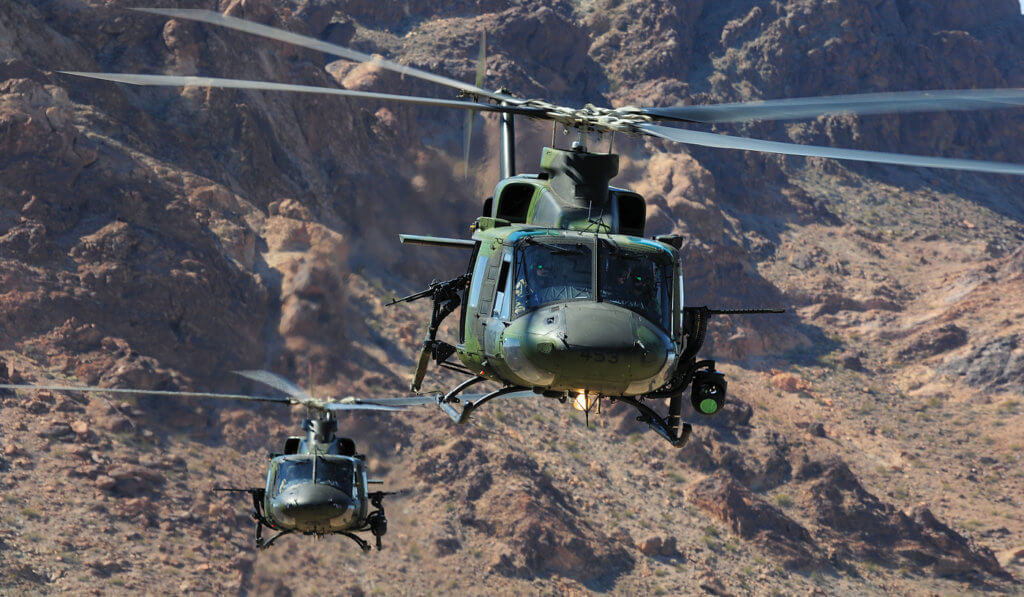
“The U.S. Navy and Marines provided an outstanding working environment,” said Teller when asked to evaluate the experience. “The hangars, ramp area and work space provided were expansive and comfortable for our maintainers and flight crews. The training areas within Camp Pendleton were excellent, from the ship deck simulation pads near the beach to the landing zones and low level canyon training areas we were able to manoeuvre through. The east Imperial Valley desert where we did gunnery and tactical training was also superb.
“The training gave us an opportunity to integrate and assimilate our helicopter platforms with those of the Marine Corps,” continued Teller. “It also gave our crews and commanders the ability to refine and use our tactics, techniques and procedures with another highly experienced military.”
He added that during RIMPAC, the Canadians worked closely with Helicopter Light Attack Squadron (HMLA) 369 “Gunfighters.”
“This allowed us to rapidly integrate into the way the Marines Corps operates and since we were working with the 15th MEU this ended up being a great arrangement. The integrated training allowed us to operate side by side with all the forces participating in RIMPAC [Southern California] and reinforced our ability to quickly move into a location and be ready to operate at a high tempo with our coalition partners.”
The Aircraft
The CH-146 Griffon is a variant of the twin-engine Bell 412 medium helicopter, with a gross weight of 11,900 pounds and engines with a combined 1,800 shaft horsepower output. The Boeing CH-147F Chinook is the latest variant of the tandem rotor Chinook, with a 54,000 pound gross weight and twin 4,700-horsepower engines.

Skies asked Teller how the helicopters held up operating in the inland deserts and coastal areas of Southern California.
“I can speak specifically about the CH-146 as it’s the airframe I’m familiar with,” he replied. “Actually, very well. The aircraft were maintained to a typical high standard. We flew hundreds of hours during RIMPAC and environmental conditions were similar to those we’ve seen on recent deployments, so we were confident in our ability to accomplish our training objectives. Having said that, the very hot desert conditions inland (Chocolate Mountains) were extreme, with the aircraft operating at the upper end of allowable ambient air temperature conditions (50C or 115F). Compared to more mild Canadian conditions, the Southern California desert operations increased the hours required by technicians to inspect and do maintenance on both airframe types.”
Maj Jack Wesselo, the Officer Commanding A Flight at 450 THS, spoke about the CH-147F. “The CH-147F performed admirably around the Camp Pendleton coastline and [in the] inland desert heat of California,” he said. “We had a few sub-component snags but they were quickly managed by our logistics and maintenance teams. Daily freshwater airframe and engine rinses kept saltwater corrosion under control.”
Wesselo added that the Chinook is well known for its performance, even when operating at 46C in the desert.
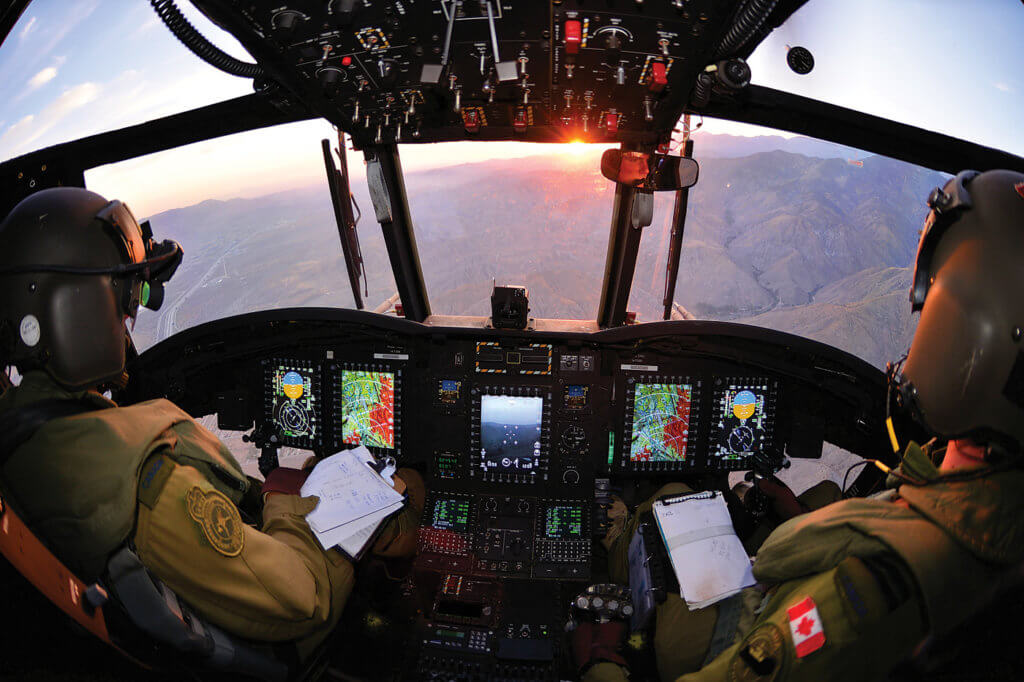
“During deck landing qualifications there was never a question if the Chinook was capable of safely landing on a ship; we just needed to validate our own training and procedures. During desert operations, the CH-147F’s advanced autopilot modes made low visibility dust ball landings less stressful than our earlier CH-47Ds we flew in Afghanistan. At no time were we asking for more power or performance. With the latest avionics and extended fuel tanks, our version of the Chinook is proving to be an exceptional machine.”
Crews
Flying in a very hot desert environment placed heat stresses on flight crew members and their fatigue levels were monitored. Operating aircraft for extended periods of time in extreme heat introduces risks not normally seen in Canada. Considerations such as dehydration, heat stress, working around hot aircraft surfaces, and poor sleep cycles in hot conditions all required education, risk mitigation and careful monitoring. After operating in Afghanistan these concerns were recognized, and they were monitored closely during RIMPAC desert operations.
“It was a great opportunity for aircrews who had not operated in this extreme environment,” noted Teller. “The desert training gave crews a real world understanding of the CH-146 Griffon’s ability to operate at the upper end of its limitations and also their own personal limits.”
When asked his overall thoughts of the RIMPAC exercise and what Canadian crews gained from it, Teller told Skies that key lessons centred on “flying in unfamiliar terrain, the DLQs [deck landing qualifications], interacting with the USMC and Navy, the overall integration and command and control aspect of the exercise with a HQ [headquarters] in Hawaii, joint planning and execution with large force packages (i.e. multi aircraft/multi-hour missions), and the confirmation of our ability to easily and rapidly integrate into a coalition exercise in a significant manner were highlights. What the aviation detachment got out of it was an opportunity for us, as the high readiness tactical aviation component for the RCAF, to practice and ensure we are ready to apply airpower when and where required.”
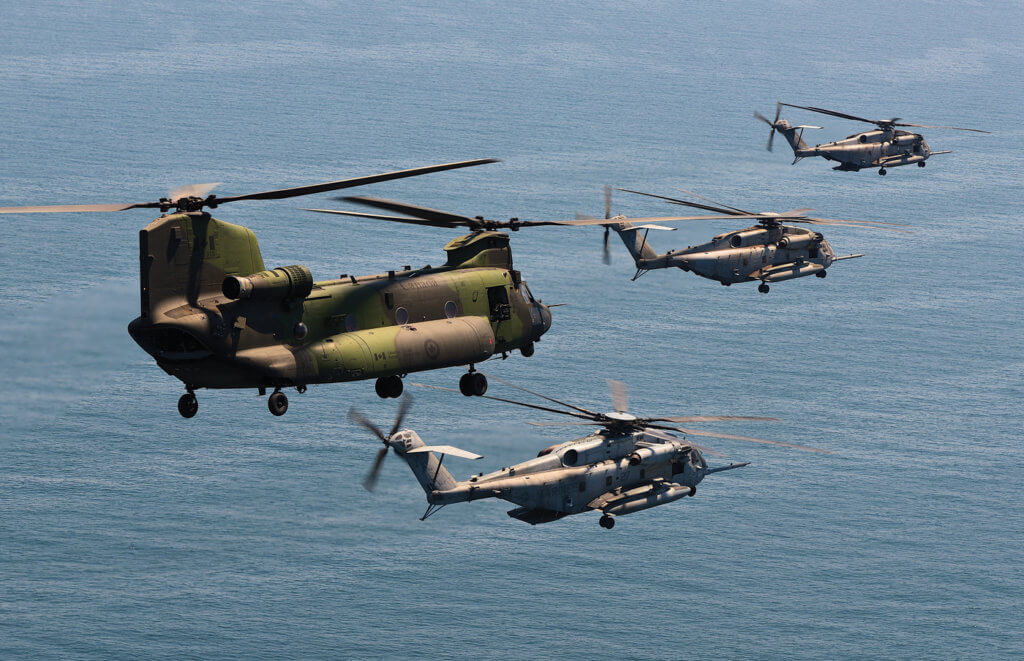
Wesselo said RIMPAC was an excellent opportunity to see how the CH-147F Chinook performs in different environments and alongside other types of aircraft.
“The air assault, door gunnery, deck landing, and TRAP training enriched our crews’ experiences at all levels,” he concluded. “I honestly can’t think of another exercise or location where we would be offered the same variety and depth of experience in such a short period of time. We would really like to participate during RIMPAC 2018.”
Skip Robinson has covered helicopter operations through photography for 25 years and has worked with Vertical magazine for over a decade. His main interests are rescue, parapublic and military operations. Skip is based in Los Angeles, Calif.

